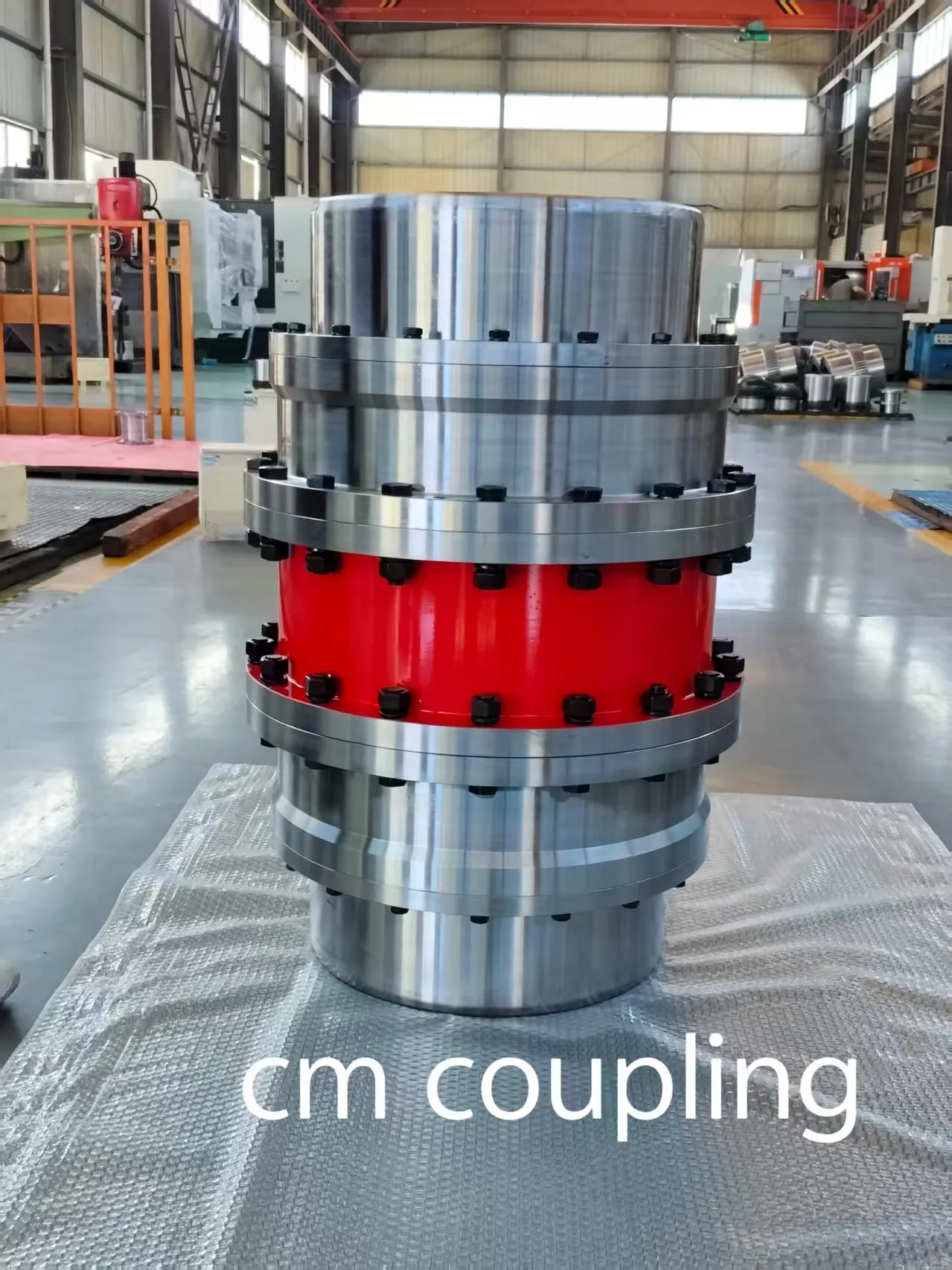Copyright © 2025 Chuangming Coupling (Jiangsu) Co.,Ltd.
Large drum-shaped toothed coupling: The core connection component for heavy-duty transmission
2025-08-22
Large drum-shaped toothed coupling: The core connection component for heavy-duty transmission
The large drum-shaped toothed coupling is a key component in industrial heavy-duty transmission systems, belonging to the category of rigid-flexible couplings. It is widely used in high-power transmission scenarios such as metallurgical rolling mills, mining crushers, and heavy forging equipment. Its unique structure consists of an outer gear sleeve, an inner gear ring, a flange, and a lubrication device. The most notable feature is that the outer gear tooth surface is in a spherical drum shape, with the center of the teeth coinciding with the gear axis. It achieves efficient torque transmission through conjugate meshing with the inner gear ring.

Compared to traditional straight tooth couplings, the drum-shaped tooth structure has significant technical advantages. In terms of bearing capacity, under the same size, its torque transmission efficiency is increased by 15-20%, and a single set of equipment can easily handle super-large torques of tens of thousands of newton-meters. The angular displacement compensation capability is particularly outstanding, with a permissible angular displacement of 1°30′, which is more than 1.5 times that of straight tooth couplings, effectively resolving shaft system offset caused by installation errors, vibration, and thermal expansion.
The design of the drum-shaped tooth surface optimizes the meshing state, making the contact stress distribution more uniform, avoiding the common problem of tooth end compression in straight tooth couplings. The operating noise is reduced by 5-10 decibels, and the maintenance cycle is extended to 2-3 years. The trumpet-shaped design of the outer gear sleeve simplifies the assembly and disassembly operation in narrow spaces.
This type of coupling has a transmission efficiency of up to 99.7%, but it is rigid and lacks buffering capacity, making it unsuitable for precision vibration reduction equipment. During use, it requires regular maintenance with special lubricating grease to prevent dry friction and gumming of the tooth surface. Currently, it is developing towards modular design, the application of high-strength alloy materials, and intelligent monitoring, continuously improving reliability and service life under extreme conditions.
Large drum-shaped toothed coupling: The core connection component for heavy-duty transmission
The large drum-shaped toothed coupling is a key component in industrial heavy-duty transmission systems, belonging to the category of rigid-flexible couplings. It is widely used in high-power transmission scenarios such as metallurgical rolling mills, mining crushers, and heavy forging equipment. Its unique structure consists of an outer gear sleeve, an inner gear ring, a flange, and a lubrication device. The most notable feature is that the outer gear tooth surface is in a spherical drum shape, with the center of the teeth coinciding with the gear axis. It achieves efficient torque transmission through conjugate meshing with the inner gear ring.

Compared to traditional straight tooth couplings, the drum-shaped tooth structure has significant technical advantages. In terms of bearing capacity, under the same size, its torque transmission efficiency is increased by 15-20%, and a single set of equipment can easily handle super-large torques of tens of thousands of newton-meters. The angular displacement compensation capability is particularly outstanding, with a permissible angular displacement of 1°30′, which is more than 1.5 times that of straight tooth couplings, effectively resolving shaft system offset caused by installation errors, vibration, and thermal expansion.
The design of the drum-shaped tooth surface optimizes the meshing state, making the contact stress distribution more uniform, avoiding the common problem of tooth end compression in straight tooth couplings. The operating noise is reduced by 5-10 decibels, and the maintenance cycle is extended to 2-3 years. The trumpet-shaped design of the outer gear sleeve simplifies the assembly and disassembly operation in narrow spaces.
This type of coupling has a transmission efficiency of up to 99.7%, but it is rigid and lacks buffering capacity, making it unsuitable for precision vibration reduction equipment. During use, it requires regular maintenance with special lubricating grease to prevent dry friction and gumming of the tooth surface. Currently, it is developing towards modular design, the application of high-strength alloy materials, and intelligent monitoring, continuously improving reliability and service life under extreme conditions.